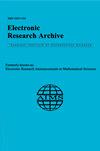Fatigue damage calculation of cold recycled asphalt pavement considering measured temperature field and traffic volume distribution
IF 1
4区 数学
Q1 MATHEMATICS
引用次数: 0
Abstract
A finite element simulation method for fatigue damage calculation and life prediction of pavement structures under the influence of temperature and traffic distribution factors was proposed in this study. Relying on the test cold recycled asphalt pavement structure, the existing distress, pavement structure forms, field monitored temperature and strain were first introduced and analyzed. Then, in constructing the numerical model, the viscoelastic constitutive model was introduced to characterize the effect of temperature and loading conditions on the mechanical response of the hot mix asphalt (HMA) layers and the emulsified asphalt cold recycled (EACR) layer. The damage variables are defined by fatigue equations, and the damage accumulation can be determined by Miner's linear fatigue accumulation theory. To reflect the distribution of traffic volume, the total traffic volume of a year was divided into 144 axle load groups according to the monthly and hourly distribution conditions. Accordingly, based on the monthly maximum and minimum temperature, 12 representative days were selected to represent the climate characteristics of 12 months, respectively. Then, each representative day's measured structural temperature data were extracted every 2 hours and linearly interpolated to obtain 144 representative temperature fields corresponding to 144 axle load groups. Through the above method, simulation calculations were performed for cold recycled asphalt pavement structures with different cement-stabilized aggregate (CSA) base stiffnesses. The results show that the fatigue damage accumulation of the EACR layers reaches its highest value in winter and midday hours, owing to the temperature variation and traffic distribution. Due to the weak fatigue resistance of EACR mixtures, it is not recommended to be paved EACR layers directly on top of the CSA base with poor bearing capacity. Otherwise, fatigue cracking is likely to occur first. For this reason, recommendations for ensuring the durability of the cold recycled pavement structure were also proposed in the study.考虑实测温度场和车流量分布的冷再生沥青路面疲劳损伤计算
提出了一种温度和交通分布因素影响下路面结构疲劳损伤计算和寿命预测的有限元模拟方法。以冷再生沥青路面结构试验为依托,首先对现有病害、路面结构形式、现场监测温度和应变进行了介绍和分析。然后,在构建数值模型时,引入粘弹性本构模型来表征温度和载荷条件对热拌沥青(HMA)层和乳化冷再生沥青(EACR)层力学响应的影响。损伤变量由疲劳方程定义,损伤累积可由Miner的线性疲劳累积理论确定。为了反映交通量的分布情况,根据月、时分布情况,将一年的总交通量划分为144个轴重组。据此,根据月最高气温和月最低气温,选取12个代表性日分别代表12个月的气候特征。然后,每隔2小时提取有代表性的一天的实测结构温度数据,进行线性插值,得到144个轴载组对应的144个有代表性的温度场。通过上述方法,对不同水泥稳定骨料(CSA)基层刚度的冷再生沥青路面结构进行了模拟计算。结果表明:受温度变化和交通分布的影响,EACR层的疲劳损伤累积在冬季和中午时段达到最大值;由于EACR混合料的抗疲劳性能较弱,不建议在承载力较差的CSA基层上直接铺设EACR层。否则,很可能首先发生疲劳开裂。为此,本研究还提出了保证冷再生路面结构耐久性的建议。
本文章由计算机程序翻译,如有差异,请以英文原文为准。
求助全文
约1分钟内获得全文
求助全文

 求助内容:
求助内容: 应助结果提醒方式:
应助结果提醒方式:


